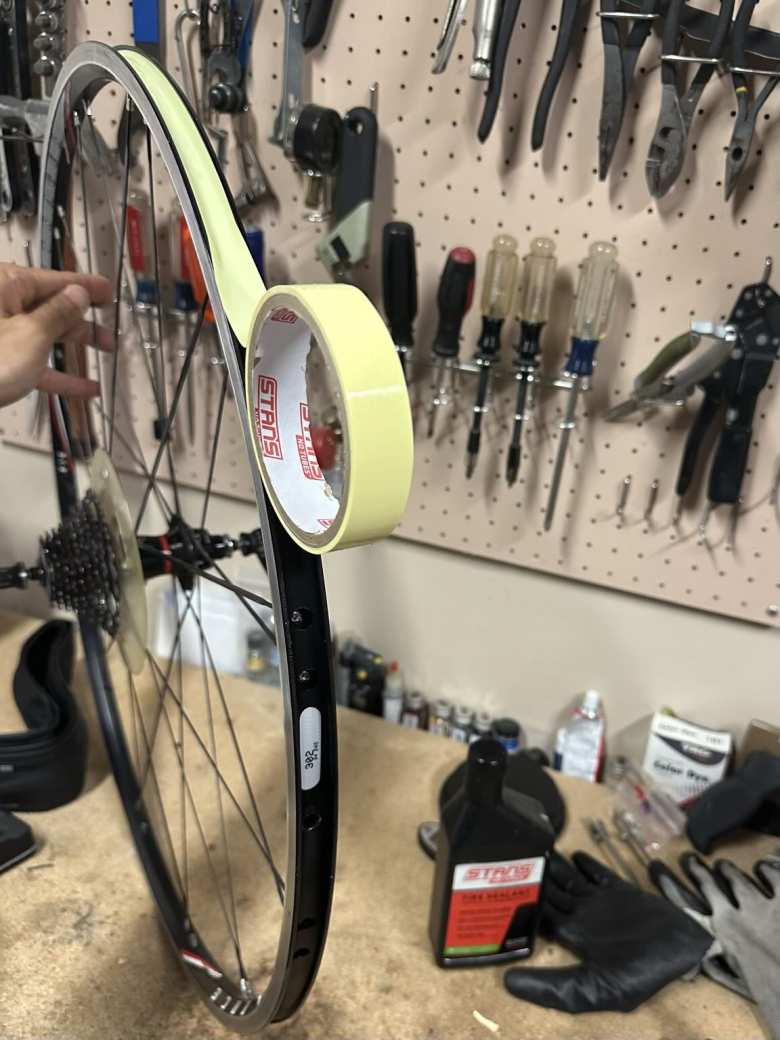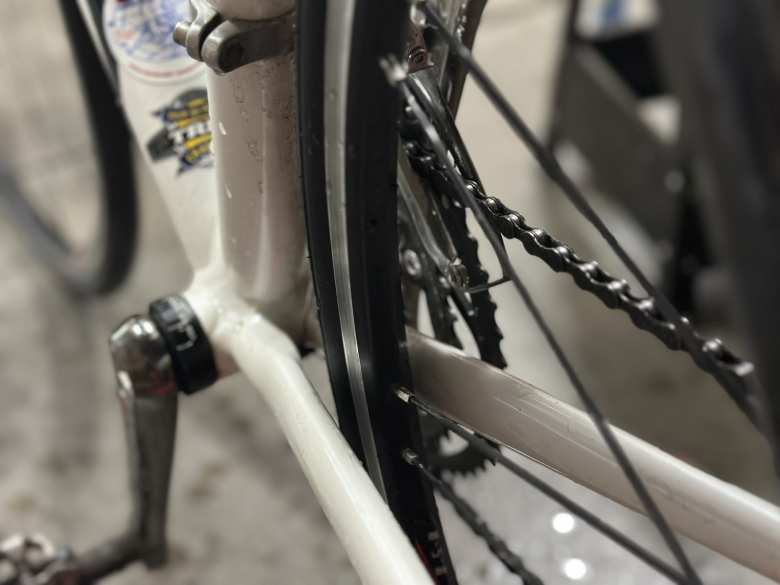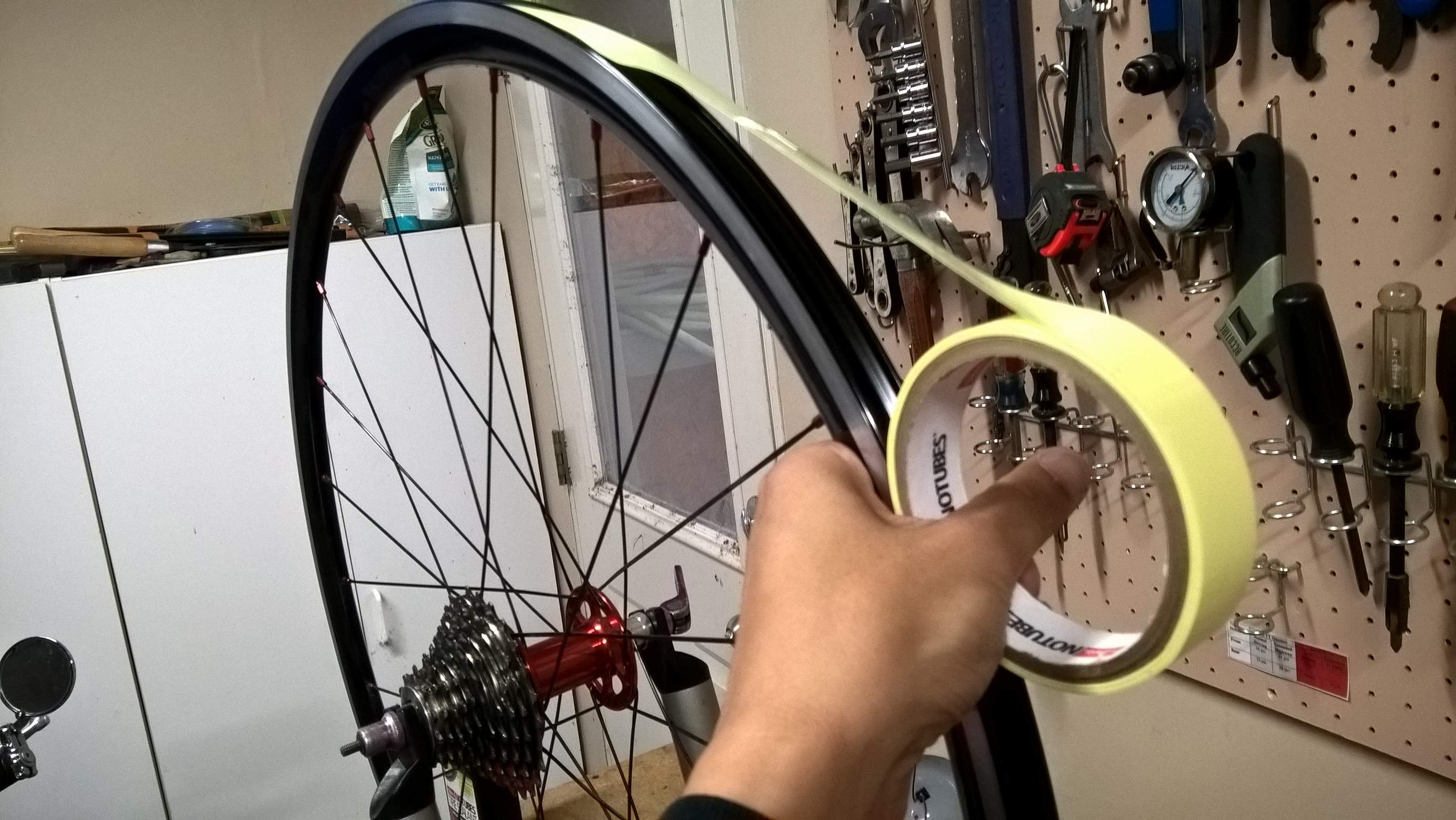I Successfully Converted a Lightweight Road Wheelset to Tubeless
It’s been nearly two-and-half-years since I have purchased and used a Shimano Ultegra 6700 tubeless-ready wheelset with tubeless road tires and sealant, and during that time I have not had to fix a single flat tire during a ride. This includes the 4300-mile 2015 Trans Am Bike Race: that I did not get a single flat tire during that competition is truly mind-boggling. In the days with tubed-tires (with or without Slime) I would have expected to have gotten around eight flat tires over that distance. Maybe more considering that I got nine or ten flat tires during the 2700-mile 2008 Tour Divide mountain bike race with tubes and no sealant.
You can bet, then, I am completely sold on tubeless tire technology. Not only does it prevent the agony of a flat tire—probably the number one bane of a cyclist’s existence—but also saves time for fixing a flat tire on the road, valuable minutes that could be otherwise used to make forward progress in a race. I’ve also found that tubeless tires are more comfortable since they can be run at lower pressures with no risk of pinch flatting. Finally, they are more eco-friendly. Imagine all the discarded, punctured rubber tubes filling landfills today. I’ve probably gone through 200 tubes in my lifetime.
While I have had complete success installing Hutchinson Fusion and Intensive tires on the Ultegra tubeless-ready wheelset, I was 0-2 in attempting to convert a pair of Mavic CXP-30 wheels to tubeless back in 2011 (which prompted me to later purchase the tubeless-ready wheelset). Thus, I was a little apprehensive about attempting to convert the Super Bike‘s lightweight Yishun 27mm Alloy Clincher road wheels to tubeless.
I should not have been fearful. Converting them was straightforward and totally successful. Here’s an outline of the procedure:
- Remove the (usually cloth or rubber) rim tape.
- Clean the inner rim track with isopropyl rubbing alcohol.
- Apply two layers of Stan's Tubeless Rim Tape to the rim, starting opposite of the valve stem hole.
- Cut a hole in the rim tape for the valve stem. I used a punch.
- Install Stan's NoTubes Universal Valve Stems.
- Optional (may make installing and inflating the tire for the first time easier): Apply soapy water around the inside of the rim with a sponge.
- Install the tubeless tires, starting at the valve stems first. For the final bits of tire, you will need to use tire levers due to a tight fit.
- Pump the tire to 90 PSI or so.
- Deflate the tire, remove the valve core from the valve stem, and inject 40 grams or so of sealant. I used Stan's NoTubes Sealant.
- Re-inflate tire.
With the procedure above, I was able to use a floor pump and did not need a compressor or CO2 cartridges to “shock and seal” the tire into place. This was a pleasant surprise. The tires on converted wheelset seemed as easy to inflate as those on the tubeless-ready one.
[Update September 2024: I highly recommend investing in a Airshot tubeless tire inflator if a floor pump does not suffice on installation.]
For tires, I used an old pair of Hutchinson Fusion 3s that had 1700 miles on them. They had quite a few cuts in the outer tread but were still serviceable. (I successfully filled in these cuts with black Sugru.) I had been using these before switching over to Hutchinson Intensive tires for the Trans Am Bike Race.
The Hutchinson Intensives are truly phenomenal tires; my pair now have over 5000 miles on them and other than having two or three small cuts in the tread, they look like they can go for a couple thousand more. They seem to be much more durable yet as good riding as the softer Fusion 3s, although they weigh about 50 grams more for each tire. (They also measure a similar 23mm wide, contrary to their 25mm advertised width.) I highly recommend them.
A couple days after converting the wheelset to tubeless, I took the Super Bike out on its first long ride since the Trans Am Bike Race in the Stove Prairie 200km Brevet. The converted tubeless wheelset performed admirably.
June 12, 2024: Converted Bontrager Race Wheels to Tubeless
Using the same method above, I converted the stock Bontrager Race wheels that were on my friend Tori’s 2005 Trek 2100 to tubeless.

I used Stan's 21mm rim tape and Thinvik tubeless valve stems. For these wheels, I would recommend using 19mm rim tape if you can get it (such as this one I’ve successfully used in the past) as you don’t have to be so careful about it perfectly centered, but 21mm was perfectly fine.
The tires I mounted were 700x28c Schwalbe Pro One TLE ones that weighed 296g each. But because the wheels had an internal width of 17.5mm and an external width of 21mm, the tires measured only 24mm wide when mounted. There is a little bit of a light bulb effect (which may impart a more comfortable, better handling, tubular-like ride), but it’s not as pronounced as I thought there would be.

To inflate the tires for the first time, I used an Airshot tubeless tire inflator. The way it works is you use your bicycle pump to inject air into the 1.15L Airshot canister, and then you use the Airshot to release a huge volume of air into your tubeless tires. That seats the tires, after which you can deflate the tires, remove the valve core, and inject sealant through the valve before re-inflating the tires with a pump as usual.

There are 2 comments.
So, our paths cross again. You were my inspiration for the MBA (took me 2 terms though)...and now, you've convinced me to convert one of my many wheelsets to tubeless.
Hi Phong. Congrats on completing your MBA in only two terms!
I'm so pleased to hear that you came across my website for both the WGU MBA and tubeless tires. Eight years after switching to tubeless (and sealant), I would never return to tubes. It's been the best upgrade to any of my bicycles because it has all eliminated flat tires.
It's the way to go for sure. Good luck with the conversion.